
You’ll have no trouble finding photos of fancy chickens on the internet because we’re all – quite rightly – obsessed with pose-worthy poultry.
We’ve pretty much quit picking chickens based on their egg production. We’re fascinated by funky top knots, feathery feet, long legs, and regal roosters.
What you might have struggled to find advice about – until now - is the reality of keeping fancy chickens at home:
- Are fancy chickens all feathers and no fun?
- Are exotic chickens pretty, but also pretty useless?
- Are fluffy-feathered fowl too high maintenance for homestead life?
- Can beginners keep fancy chickens, or are they strictly for the egg-sperts?
Fancy chickens are bred for their form, not their function and come in all shapes, colors, and sizes. Some have impressive or excessive feathering, some have fabulously fluffy butts, some have hobbit-like feathery feet, and some are just so tiny that it’s hard to believe they’re real hens.
These chickens all have one thing in common: something about them is unique enough to earn them their ‘fancy breed’ title.
Ornamental chickens have been gracing oriental gardens for hundreds of years, doing nothing more than looking beautiful and demonstrating their owner’s wealth. But, times have changed…
Yes, we love fancy chickens again, but we want more from our backyard birds and homestead hens than just eye candy. I’m going to stir up the chicken broth here and ask that we re-think our chicken terminology a bit.
There’s a new kind of ‘dual-purpose chicken’ in demand: We want ornamental layers. This article is all about fancy chickens as pets and layers. Can we have our fancy cake and eat it? Yes, we can!
If you’re new to keeping chickens, then I can’t recommend researching chickens before you buy highly enough. There’s not a chicken keeper out there who won’t agree: the best investment you can make before buying chickens is making sure you know your chicken stuff!
“I was new to keeping chickens and wanted helpful advice. Chickenpedia courses have been incredibly helpful and your online consulting invaluable. Thank you!” (Claire S, Columbus, OH)
Next Up…
10 Fancy Chicken Facts You Need to Know
- What are Fancy Chickens?
- What Are Ornamental Chickens?
- What are Exotic Chickens?
- Do Fancy Chickens Lay Eggs?
- Can Fancy Chickens Make Good Pets?
- Can Beginners Keep Fancy Chickens?
- Are Fancy Chickens Hard to Care For?
- Are Fancy Chickens Expensive?
- What Are the Fanciest Chickens?
- How Do I Show My Fancy chickens?
10 Fancy Chicken Breeds Anyone Can Keep
- Onagadori Chickens
- Polish Chickens
- Silkie Chickens
- Frizzle Chickens
- Ayam Cemani Chickens
- Appenzeller Spitzhauben
- Araucana Chickens
- Jersey Giants
- Modern Game
- Sebright Chickens
10 FANCY CHICKEN FACTS YOU NEED TO KNOW
What are Fancy Chickens?
Fancy chickens are bred for their unusual and desirable looks. There’s no true definition of a ‘fancy chicken’, but they’re basically chicken breeds or varieties that we love to look at. Fancy chickens are bred for their form, not their function.
Call them what you like: fancy chickens, ornamental chickens, decorative chickens, show chickens…they’re beautiful, and their eggs are a breakfast-shaped bonus.
What Are Ornamental Chickens?
Ornamental chickens tend to be smaller, prettier breeds that were originally bred to frequent oriental gardens and add to the air of opulence. It really didn’t matter if they laid eggs. That wasn’t their job. If you wanted eggs, then you should have chosen a solid laying breed like a Leghorn or a Plymouth Rock.
What are Exotic Chickens?
Exotic chickens are breeds that have been intentionally imported from other countries. Silkies, Polish, and Crevecoeur chickens are classed as exotic chicken breeds in the US, but the Rhode Island Red and the Dominique are not.
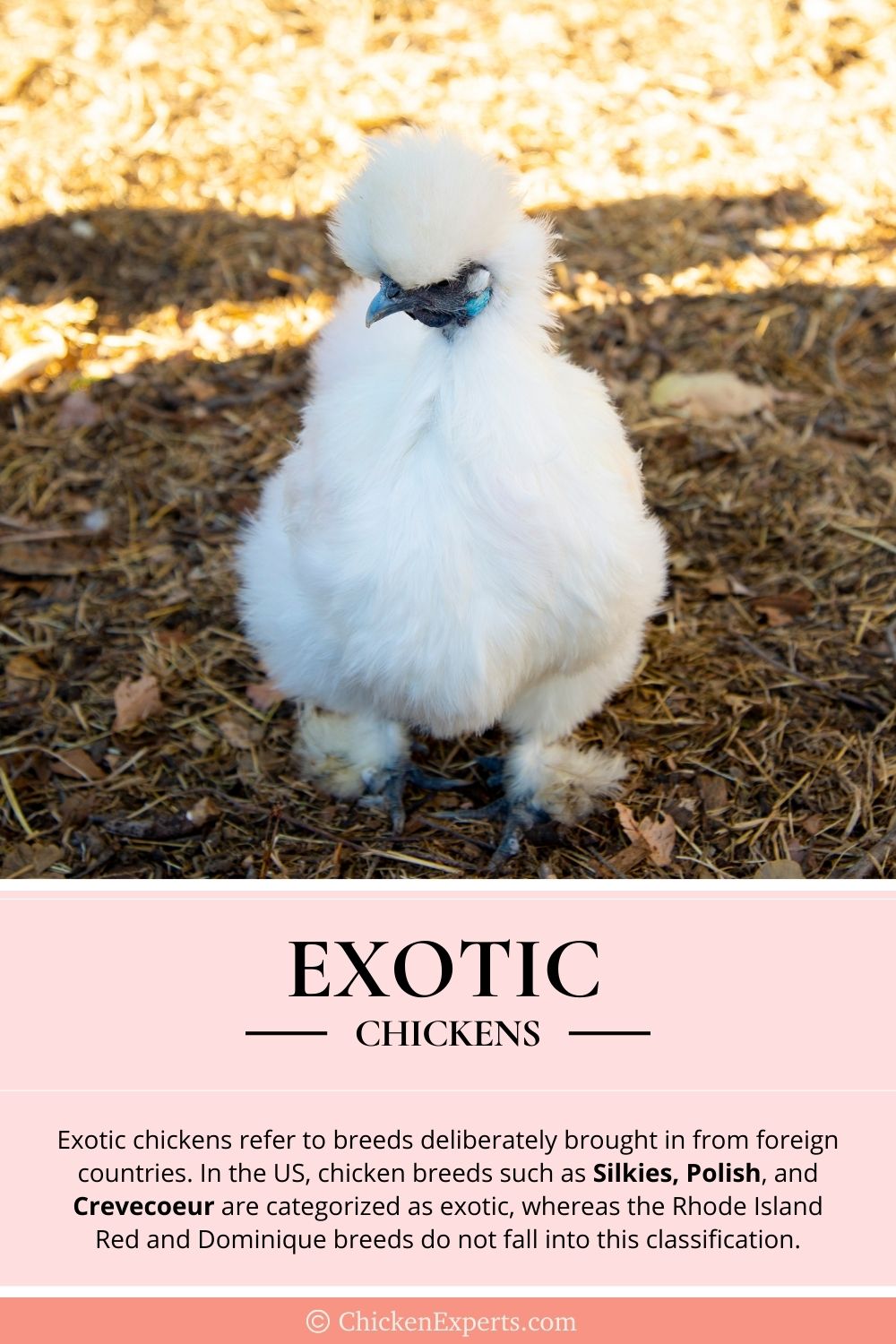
Do Fancy Chickens Lay Eggs?
No hen is too fancy to push! There’s no such thing as a breed of chicken that doesn’t lay eggs🥚 – they wouldn’t last very long!
As fancy chickens have been bred to develop their looks rather than their laying ability, they don’t tend to lay as many eggs as utilitarian chicken breeds like the Wyandotte, but some fancy breeds still put on a decent show. They’re not just poultry-poster girls.
We used to categorize chickens quite simplistically based on their function: There were meat birds, layers, dual-purpose, and then ornamental chickens. Now, we can have pretty chickens and eat their eggs!
Can Fancy Chickens Make Good Pets?
Fancy chickens often work great as pets, even for kids. Most are as beautiful on the inside as they are on the outside. Not always, but most of the time! Some of the most popular poultry pets are fancy chickens.
If you think about it, it makes sense: these birds have been bred for their beauty. We’ve kept them close, admired them, groomed them, handled, and shown them. We’ve made sure that they’re used to us fussing over them and bred the strains that have allowed us to love them.
Some of the friendliest chicken breeds are fancy chickens!
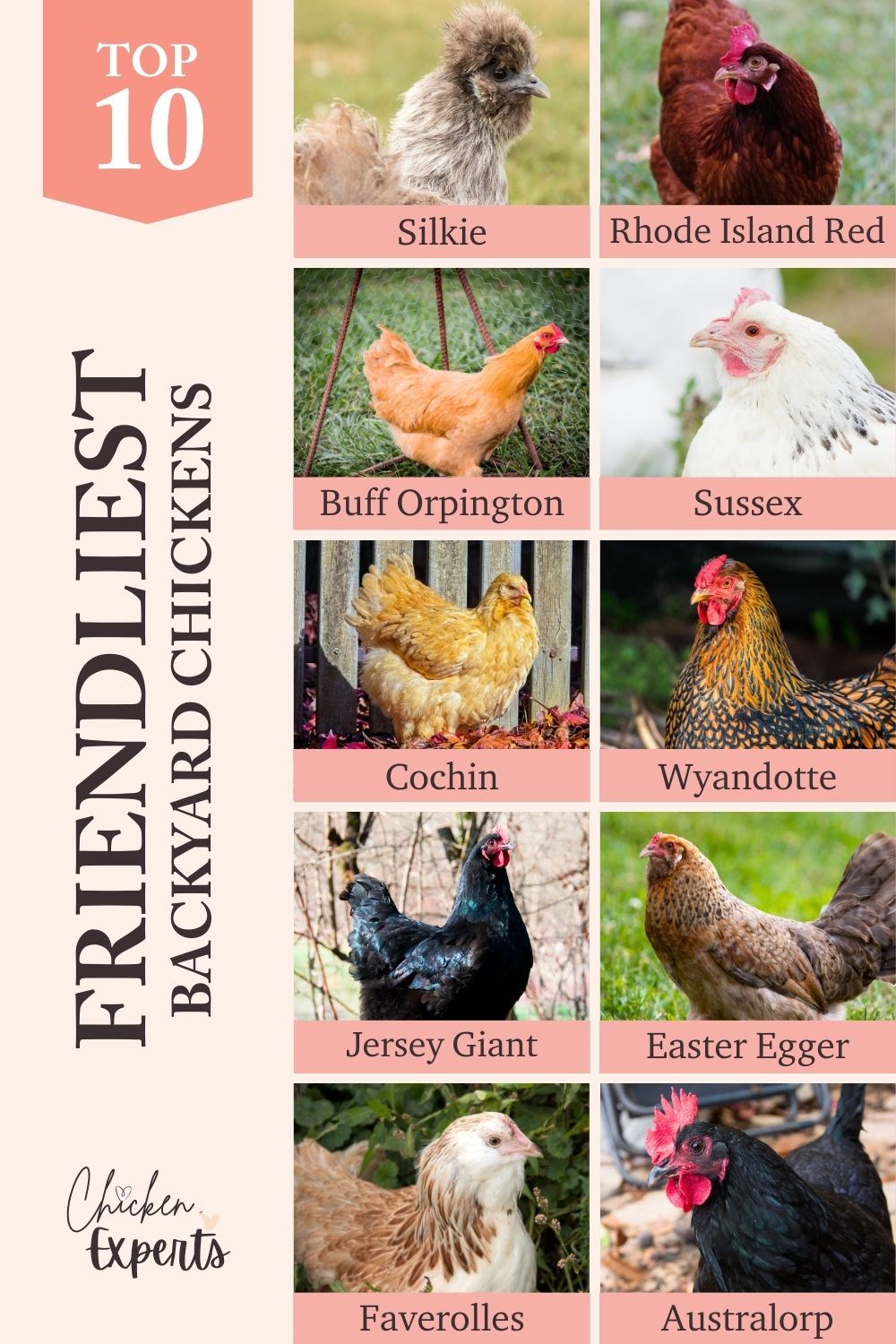
Can Beginners Keep Fancy Chickens?
Most fancy chickens are suitable for beginners. Granted, not all of them are, but there are loads of luscious-looking lovelies that are just as happy setting up home(stead) with beginner chicken keepers as they are strutting their stuff at chicken shows.
Certain breeds are more demanding than others, or just need a little egg-stra knowledge, but none are unmanageable for beginners with the right chicken breed care knowledge.
Are Fancy Chickens Hard to Care For?
Fancy chickens all have an unusual trait that makes them stand out in the coop crowd. They might be tiny or huge, fluffy or bald, or have record-breaking tail feathers like the Phoenix chicken.
Some quirky characteristics are easily accommodated, meaning that the breeds are just as easy to care for as less fancy breeds. Bantam chickens are arguably easier and cheaper to care for than most standard-sized chickens.
Others might need some extra care and attention. Heavy or fluffy feathering can impact how well-suited chickens are to certain climates, meaning they need to be kept cool and don’t do well in warmer climates. Feathery feet and elaborate crests are prone to frostbite so it’s important that Polish chickens, and Silkies, for example, are kept dry and out of damp or drafty conditions.
The only fancy chickens that are rather hard to keep are those that aren’t the most affectionate so don’t take well to handling like Game chickens. These fancy chicken breeds may need a separate coop to avoid chicken politics taking hold.
Are Fancy Chickens Expensive?
It’s only rare fancy chickens that tend to be expensive to buy. Silkies are popular and you can buy them for just 20 USD per bird. On the other hand, the rare and exotic Kadaknath chicken might set you back 1200 USD with a specialist breeder.
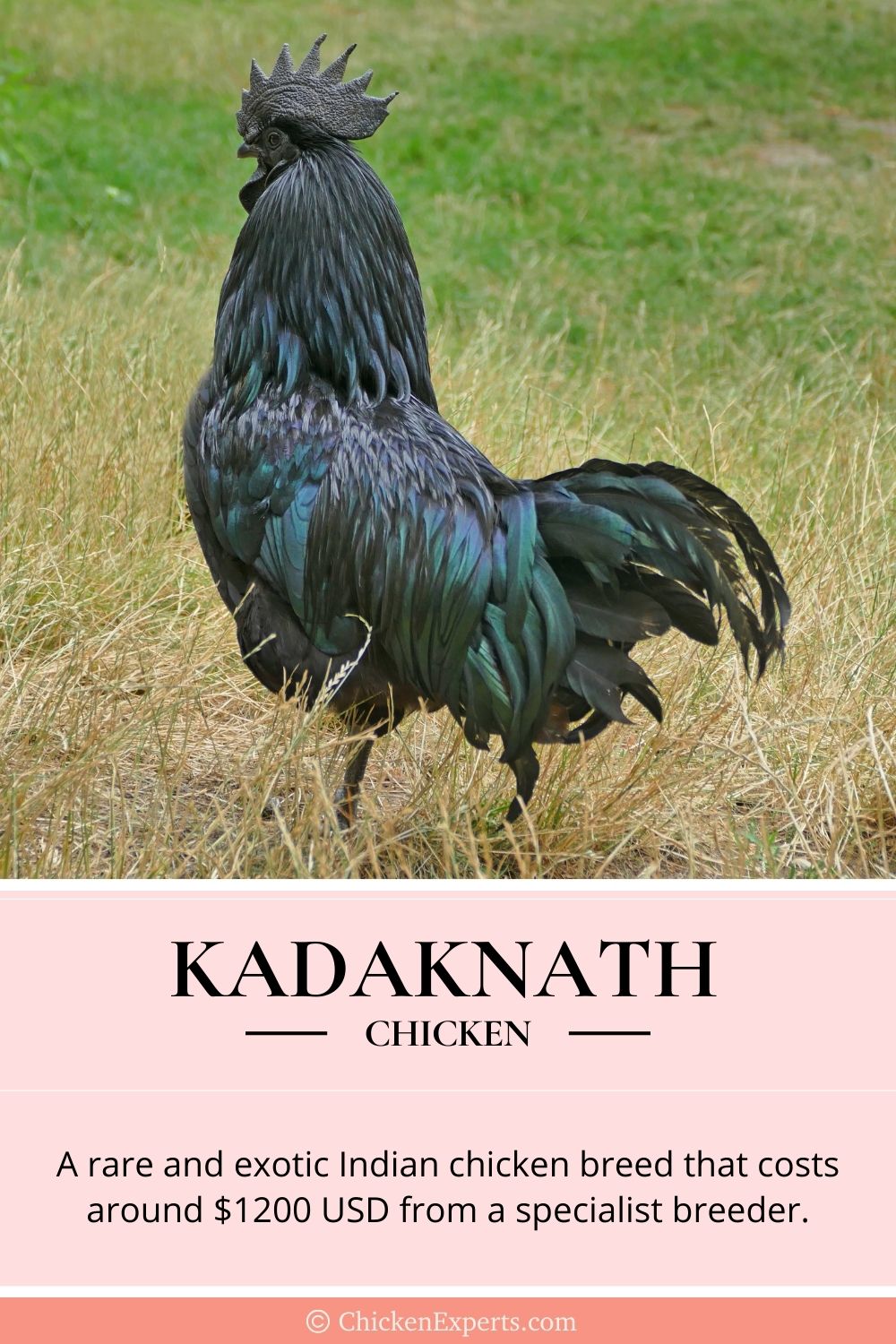
Which Chickens Are the Fanciest?
Beauty is in the eye of the beholder, so this is subjective. Some of us – myself included - go soppy over fluffy and cute chickens, but some of us appreciate the detail and definition of a heritage bird or a muscly rooster.
Can I Show My Fancy Chickens?
If you want to share your gorgeous girls and guys with the world, then fancy chickens are perfect for showing. Here’s a speedy guide to what showing chickens is all about!
How To Show Chickens - Wikihow
10 FANCY CHICKEN BREEDS
The unique, the cute, the handsome, and the family-friendly!
Disclaimer: All chickens are beautiful. I love all my ladies – especially my hardworking mommas who might not have the time to fancy up their feathers like they used to. They have my utmost respect.
Some breeds are just fancier than others though. Fact!
1. ONAGADORI CHICKENS
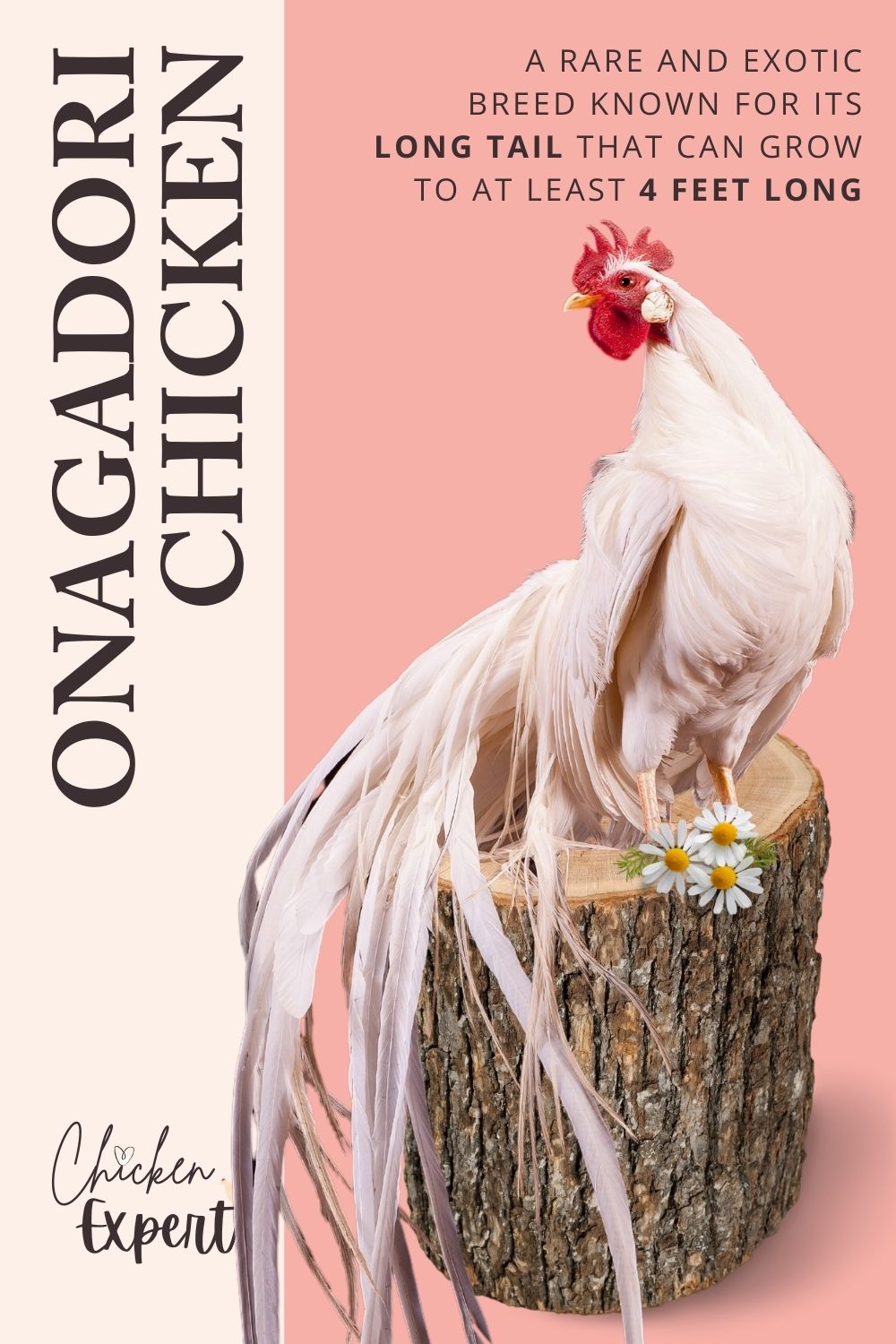
Onagadori, or Phoenix, chickens were traditionally kept as Japanese🇯🇵 pets. Those elaborate and elegant tails were thought to symbolize the owner’s wealth. As you can imagine, this breed is not cheap to buy. They are a rare, exotic breed, and can set you back thousands of dollars.
The average Onagadori tail is expected to grow to at least four feet long, with some reaching lengths of six or even seven feet! If you manage to look past those epic tails they also have stunning color variations including the most popular red, white, black, blue, and green.
Onogadori hens lay 100 eggs a year. They’re not great layers, but they make up for it with their wow factor feathers and loveable personalities. Onogadori chickens are mega clever, curious, affectionate, and fiercely maternal.
Their fancy feathers do need extra care including grooming and regular checks for mites. Cramped or messy conditions soon result in messy tails, and you must be careful not to tread on them. Roost bars need to be high enough for tails to hang from, rather than drag along the floor, and Onogadori chickens need a special high-protein diet to stay fit and healthy.
2. POLISH CHICKENS
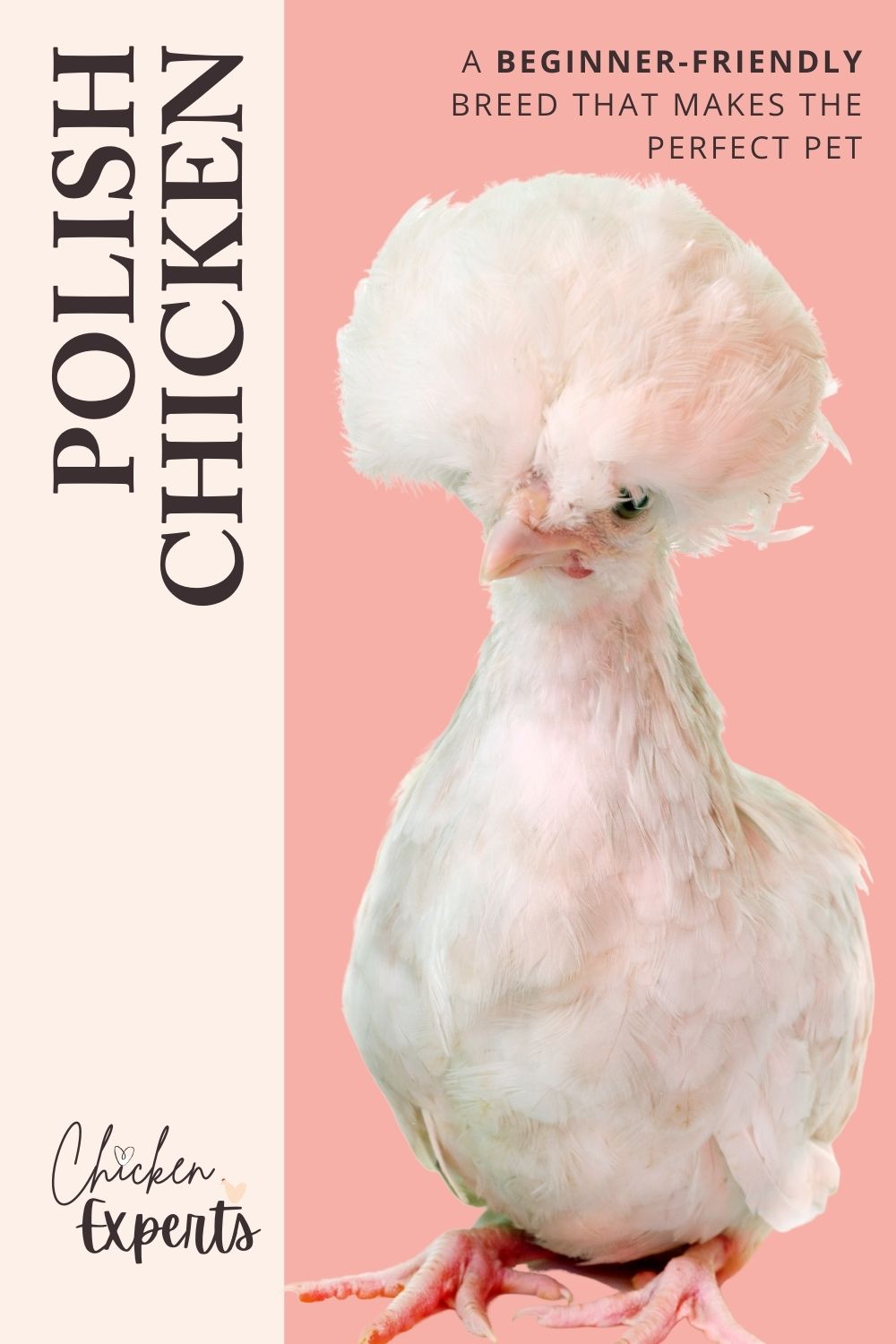
Don’t you even think about questioning if Polish chickens are fancy. They're rocking the chicken world with their rock-chick looks, and quirky personalities.
Polish chickens are medium-sized, slim chickens with distinctively huge hair. Polish hens weigh 4.5 lbs and roosters weigh 6lbs, on average. They stand quite tall at 12-15 inches.
They come in a pick 'n' mix of color varieties, and in bantam and frizzle varieties too. Polish bantam roosters weigh 1.8 lbs and bantam hens weigh a dainty 1.6 lbs.
Polish chickens make the perfect pets as they're affectionate, inquisitive, and playful. They enjoy toys as much as treats. They're entertaining to have around, and they are undeniably fancy.
Polish hens lay 150 medium-sized bright white eggs a year. Whilst their productivity isn’t that impressive, for ornamental birds, that’s not too shabby!
Polish chickens are beginner-friendly but do need a little extra care. Being unable to see much doesn’t help when you look like a lollipop to predators. They can't see predators coming so they need a very sturdy, covered coop to stay safe. They won't last long free ranging. They also need dedicated owners who’ll remember to announce their arrival and avoid shocking them into a feathered frenzy.
Polish chickens can’t get cold or damp, so heaters may be called for in colder months. They don't do sand (nobody knows why) so coops need to be lined with fresh straw or wood shavings. Water bowls are better kept a little higher off the ground, so they don't have to dunk their bangs in their drink.
They may need an occasional fringe trim, so you'll need to get them used to being handled early on. They must be mixed with caution and monitored closely as they can end up being pecked and bullied by bolder breeds.
Take Me to More Polish Chicken Pics!
3. SILKIE CHICKENS
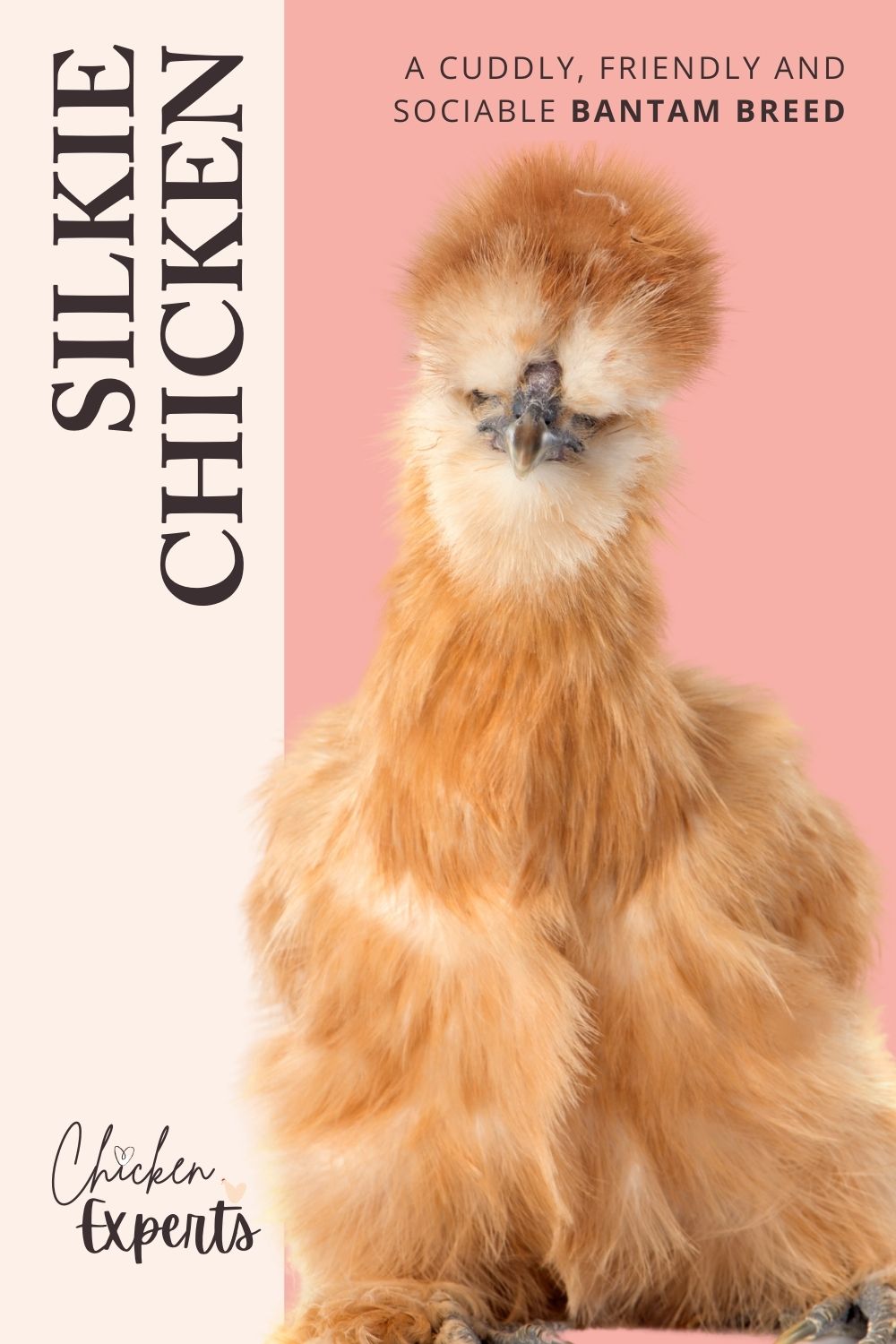
How can we not mention the Silkie when we’re talking fancy fowl breeds?
Silkies are FLUFFY chickens!They’re also true bantams and average just 8-14 inches tall. Silkies come in ten commonly acknowledged colors, have an extra toe, unique turquoise earlobes, and have rare black skin. They’re just little bundles of fanciness!
Silkies are as beautiful on the inside as they are on the outside: they’re cuddly, friendly, sociable, affectionate, and make award-winning mommas. They’re small and quiet meaning they’re perfect backyard chickens and well suited to suburban areas.
Silkies are classed as poor egg layers and lay 2-3 small eggs each week, but some are known to lay up to 5, so it will depend on your hen, and how well she’s cared for.
Silkies are one of the rare black skinned chicken breeds. The melanism in Silkies’ connective tissues is caused by fibromelanosis: a mutation believed to come from Asia.
Despite how special these fancy fluff bombs are, they’re popular, affordable, and utterly beginner friendly.
Tell Me More About These Silkies!
4. FRIZZLE CHICKENS

Frizzle chickens are next up to Silkies when it comes to being fancy in a fluffy way!
Frizzles aren’t a breed of chicken, but a feathering variety seen in a huge range of chicken breeds. The physique, appearance, laying ability, and temperament of frizzled chickens mirror those of their breed. One thing’s for sure though, frizzles are ALWAYS fluffy!
Frizzles are bred by breeding one frizzled chicken with another smooth-feathered chicken of any breed. Some breeds frizzle more easily than others and the most successful and popular frizzles include Cochins, Polish Chickens, Japanese Bantams, and Barred Rocks.
Frizzles are best suited to warm conditions since their fluffy feathers don’t offer the best insulation.
5. AYAM CEMANI CHICKENS
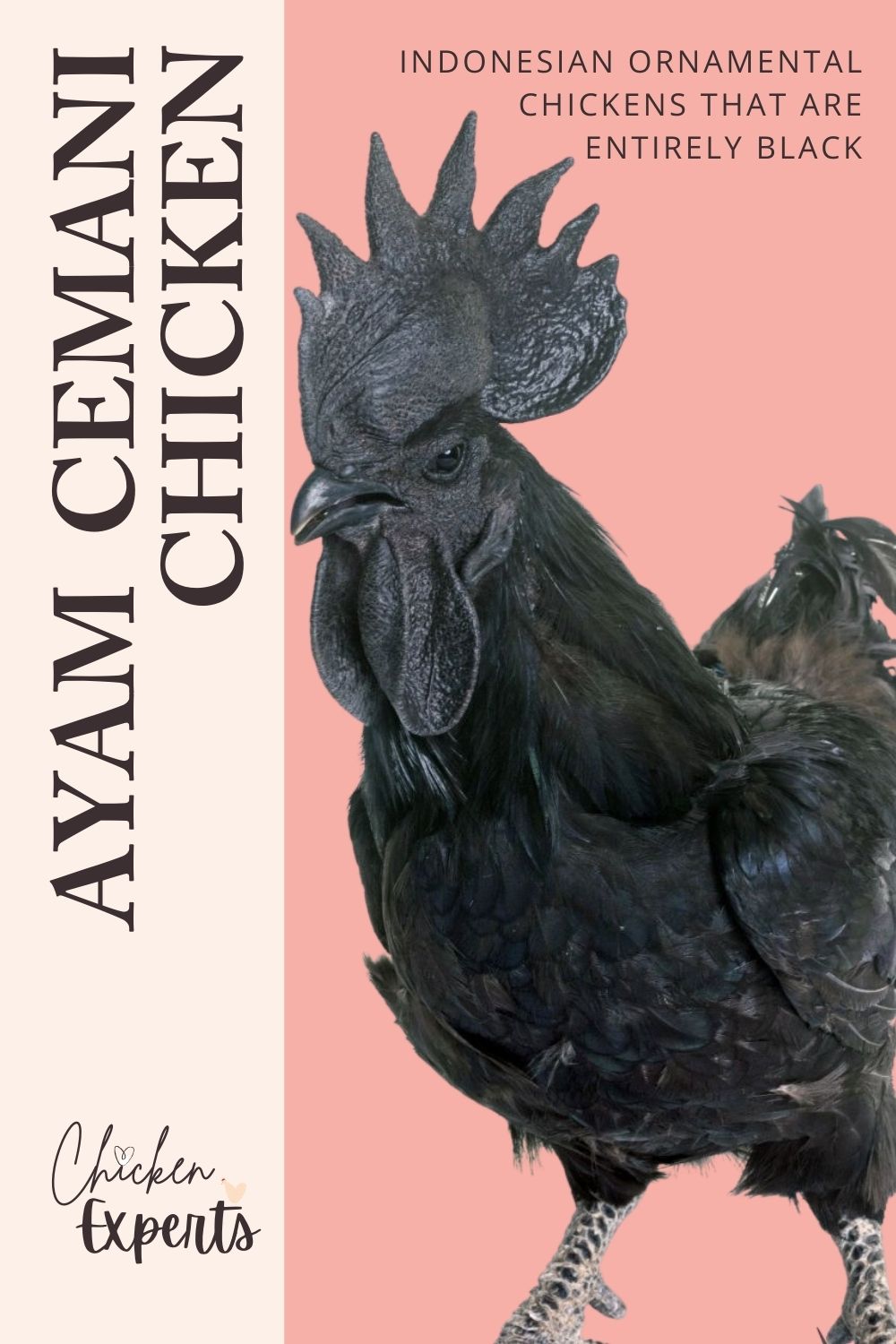
The Ayam Cemani is a rare, beautiful, entirely black breed of chicken. Hens weigh 3.5 - 4.5lb and roosters weigh 4.5-6.5 lb.
The Ayam’s gorgeously gothic look is caused by Fibromyalgia, meaning its black color extends beyond its skin, feathers, legs, and beak to its meat, bones, and organs. It has a black heart, and even the Ayam’s blood is darker than that of most chickens.
“The Ayam cemani chicken may be the most deeply pigmented creature on earth.” (The National Geographic)
Ayam Cemanis are Indonesian, ornamental chickens. They’re regal-looking chickens that are highly respected in Indonesia and believed to have magical, spiritual powers.
Ayams are rare, so they’re expensive. The Ayam Cemanis is the most expensive breed of black chicken with an unsexed chick costing around 100 USD and mating pair costing around 5000 USD!
Cemani hens lay for about 20-25 days and then stop for a while, meaning they only manage to lay 60-100 large cream eggs a year.
Once you find one, they make great pets. They’re hardy, docile, friendly, heat-tolerant, easy to handle, and of course awesome conversation starters! They’re also thought to be able to communicate with the dead…if that happens to be on your chicken wish list.
6. APPENZELLER SPITZHAUBEN
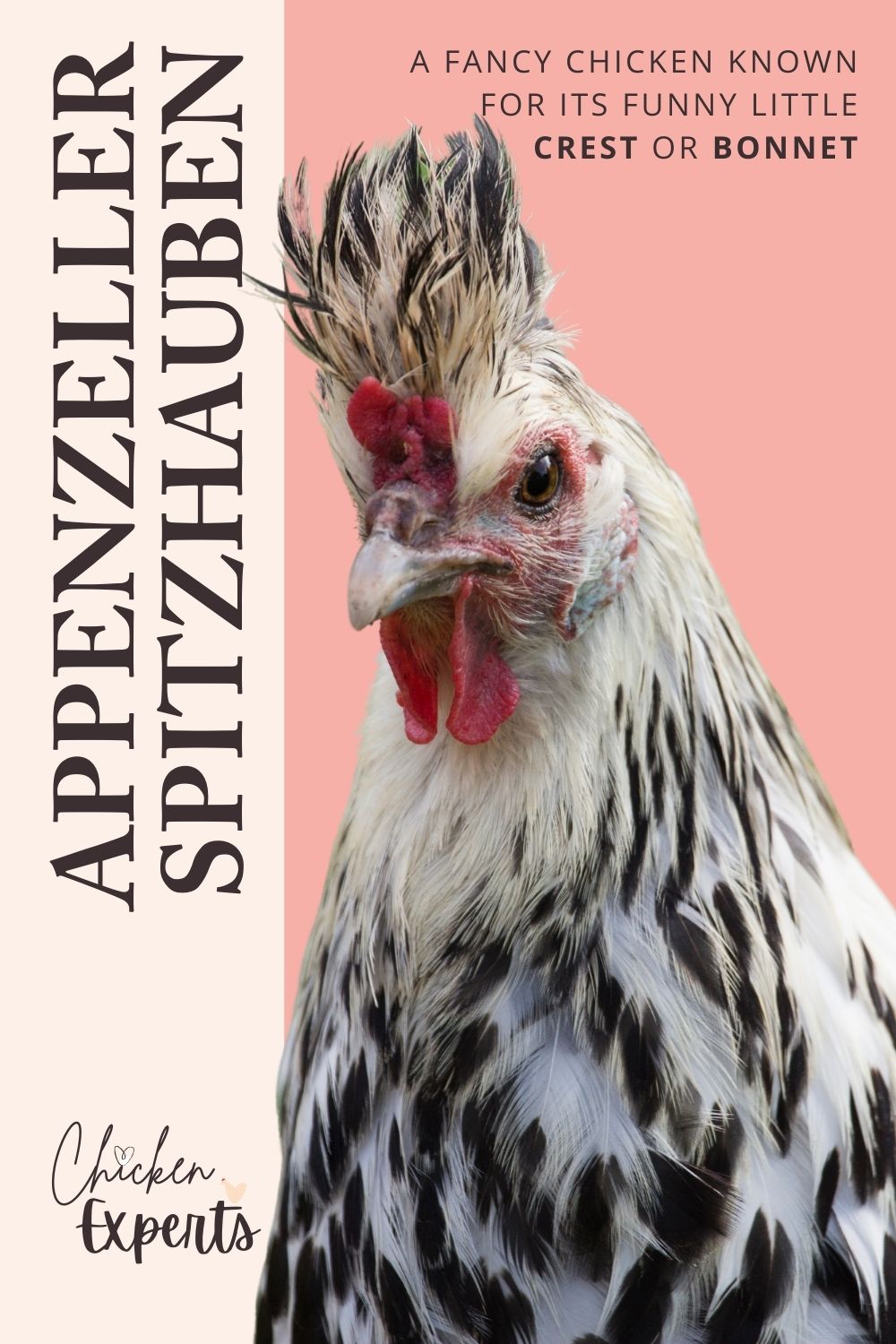
This Swiss ornamental chicken breed is another fancy chicken known for its funny little crest or bonnet, combined with a devil horn!
This beautiful breed isn’t officially recognized as a breed in the US🇺🇸. I feel like this is a great example of why we shouldn’t get too hung up on recognized breeds, and instead, just enjoy nature’s chicken empire!
The standard-sized breed is small with hens weighing 3.5lbs and roosters 4.5lbs, but the rare bantams are ultra diddy with bantam hens weighing just 20 ounces and bantam roosters just 20 ounces.
They’ll lay 150-180 small white eggs a year and won’t stop in the winter! They’re fancy, compact, dependable, and friendly, making them a great beginner fancy breed in my eyes.
Most Appenzeller Spitzhauben keepers have great things to say about the breed!
Meet Biscuit! She lives at home with Kalen in Kentucky and is a bit of a poster girl for Appenzeller Spitzhaubens as pets!
“Biscuit is such a happy hen! She’s friendly, one of our first egg layers, and a little naughty. She wants to be a house chicken real bad. She’s just such a joy” (Kalen Clark)
<Insert pics and video link>
7. ARAUCANA CHICKENS
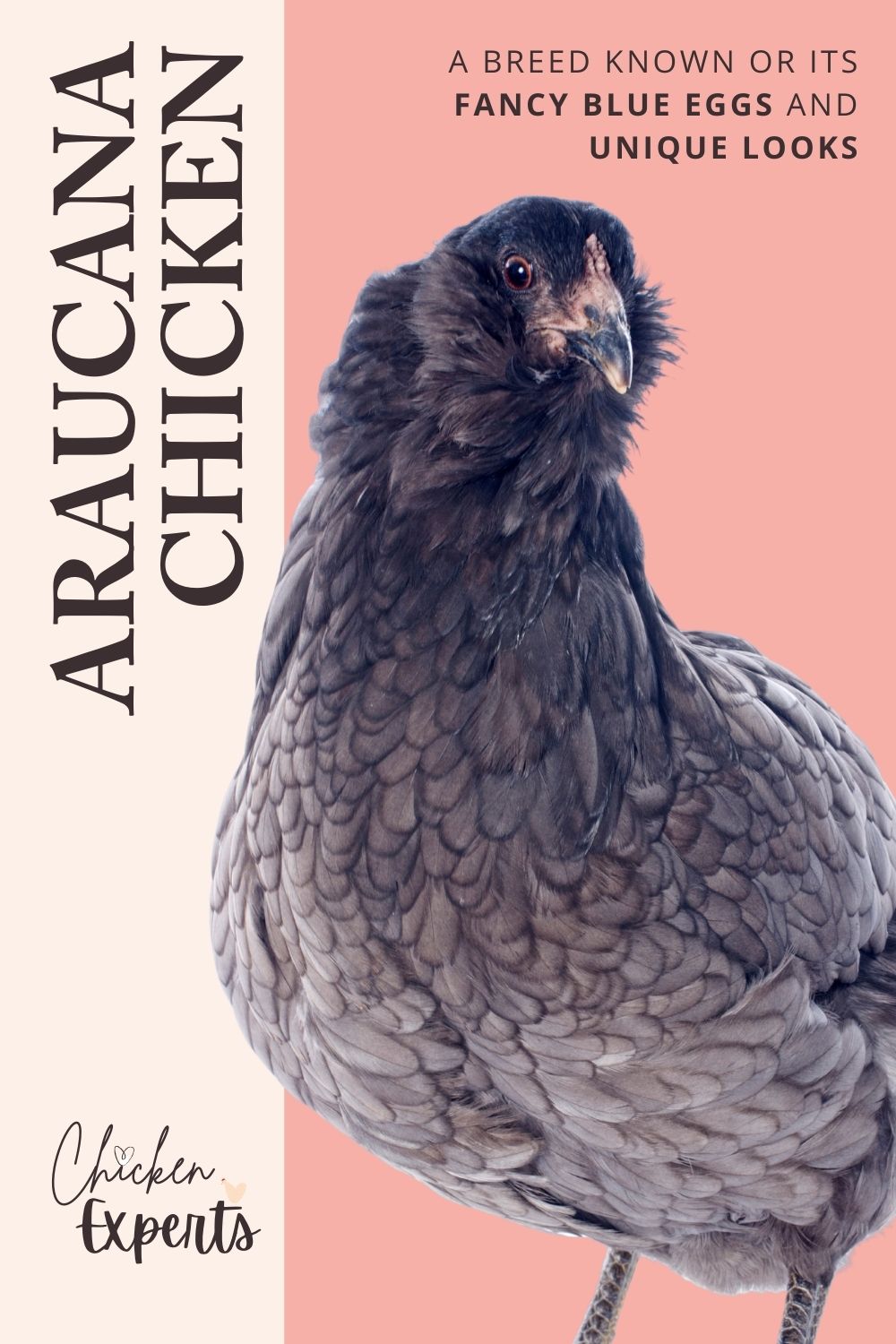
The Araucana was bred for its fancy blue eggs and unique looks, but sadly this intensive breeding has had consequences for this chicken breed.
The Araucana is a distinctive-looking chicken and reminds me - in the nicest way possible - of a guinea pig. They have bizarre facial hair, ear-tufts, concave spines, and they don’t have any tails.
Araucanas are great layers and will lay 150 – 250 eggs unusual baby-blue eggs a year for you.
They’re hardy, they don’t mind confinement as long as they get out to exercise, they’ll be delighted if you let them free-range, and they seem to be good at dodging danger.
They’re a comical, entertaining breed, who are energetic but docile and can be easily handled if you start them young. As pets, they’re beginner friendly, but they’re an absolute nightmare to breed.
True Araucana chickens are very rare. Most chicks that are hatched successfully are not 100% Araucana meaning they can be expensive to source from reputable breeders.
Want to know more about the Araucana? Read my breed blog here.
8. JERSEY GIANTS
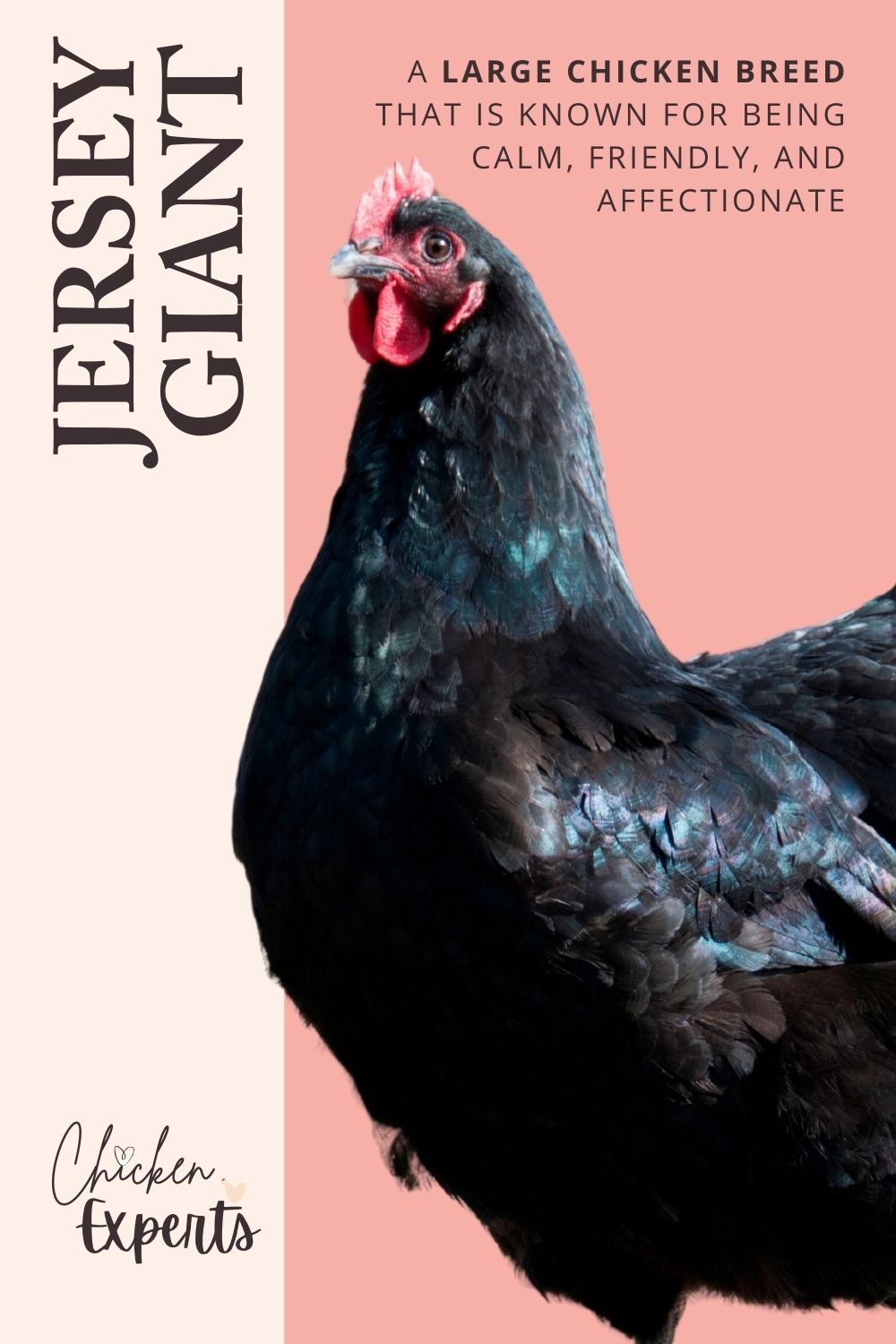
Jersey Giants are fancy because they’re BIG. These 13-15lb chickens are truly the gentle giant of the poultry world: standing up to 26 inches tall!
They're big-bottomed and big-hearted birds: an amazing breed that ticks all the barnyard boxes.
They've nothing to prove so they're calm, friendly, and are said to be rather affectionate. They're great with kids and other breeds, and they're reliable layers of whopper eggs all year round.
Jersey giants lay 280 large to jumbo-sized eggs a year. Wow! Nobody’s missing breakfast with this chicken at home.
Learn All About This Jersey Gem
9. MODERN GAME CHICKEN
With the modern game chicken, it’s all about those legs.
The modern game banatam varieties are more popular than the standard-sized chicken, and they’re purely ornamental.
Bantam hens weigh 18 ounces at most and bantam roosters weigh 23 ounces at most. They’re tiny, fragile, stunning chickens, which come in 18 different color variations.
They’re not dissimilar to the Malay in looks but are known for being much nicer in temperament, but they’re not at all heavy on the eggs.
Great pets, and stunning, but fragile! Maybe not best for toddlers.
10. SEBRIGHT CHICKENS
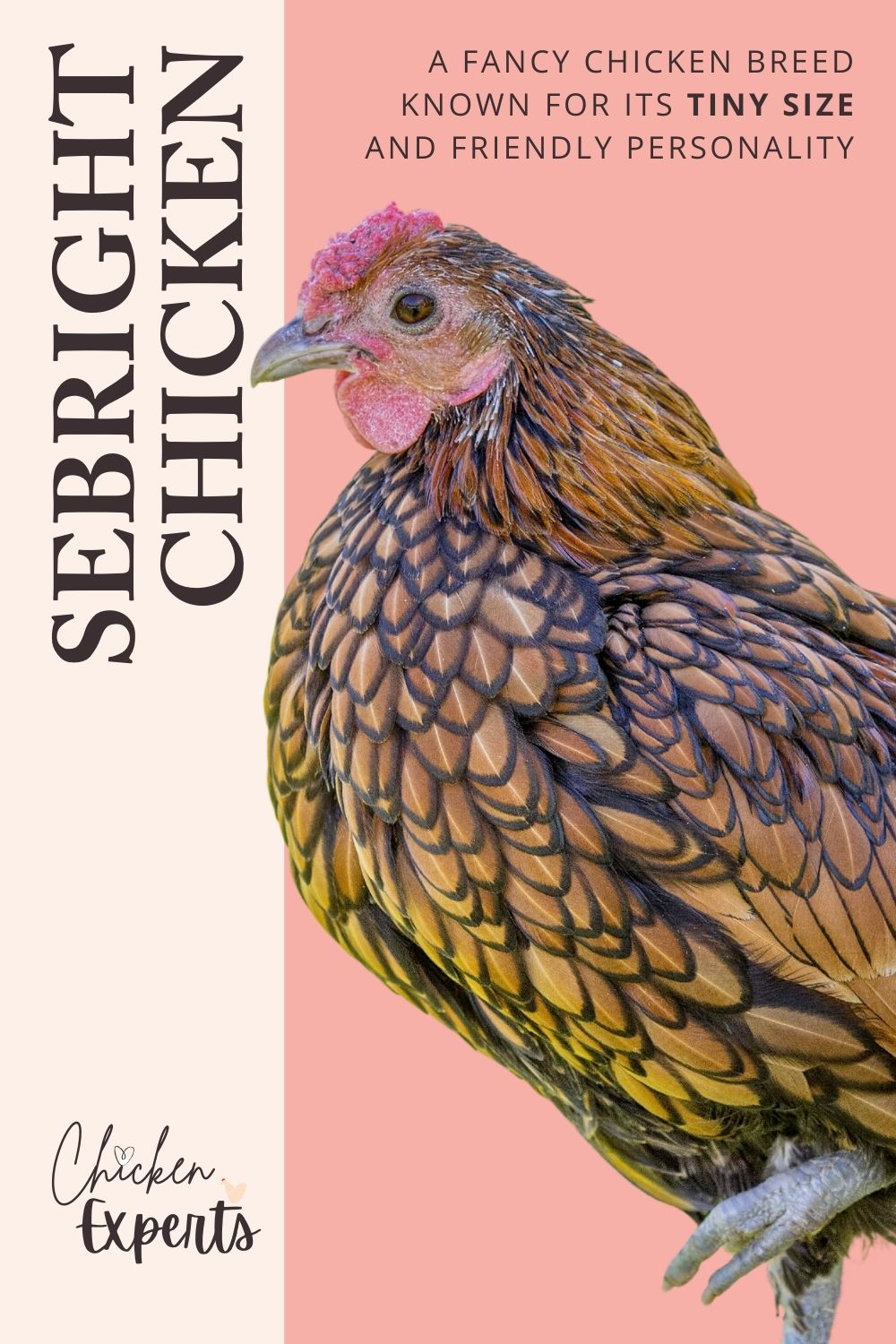
Sebrights are another great example of bantams as fancy chickens. It’s their diddy size that makes them so special, and in most ways, quite manageable.
Sebright roosters weigh 0.62 kg, while the hens weigh approximately 0.57 kg. It’s not really surprising that such a teeny hen lays just 60-80 little eggs a year. Ouch.
Even Sebright roosters are not aggressive: they’re pleasant and friendly chickens and make great pets for delicate hands.
Like most tiny chickens they are a bit skittish and on edge. They’ll need containing as they have enormous wings and are brilliant fliers even when they’re still young. They lean on flight rather than fight when they’re threatened.
ARE YOUR FEATHERY FRIENDS FANCY?
…Or, do they THINK that they are?
Share your thoughts of caring for fancy feathers in the comments.
I could go on…and on…and on chatting about fancy chickens, because there are honestly so many fascinating types of chicken and chicken breeds to pick from!
If you can’t get enough of cute and crazy chicken pictures then here are a few more reads to help you get your hits!
Whatever type of chicken you’re thinking of going steady with, understanding a breed’s needs and temperament is an absolute must before you make a final decision. Do you know how long chickens live for? It’s not a fling…it’s a long-term relationship!
Chickenpedia’s chicken breed course is the only way to get to the bottom of which breeds are suitable for you. The course covers everything from a breed's personality, laying ability, health issues, and broodiness, to how much room they need in their coop.
Shake your tail feathers into action and check out Chickenpedia before you bring your fancy chickens home to roost.


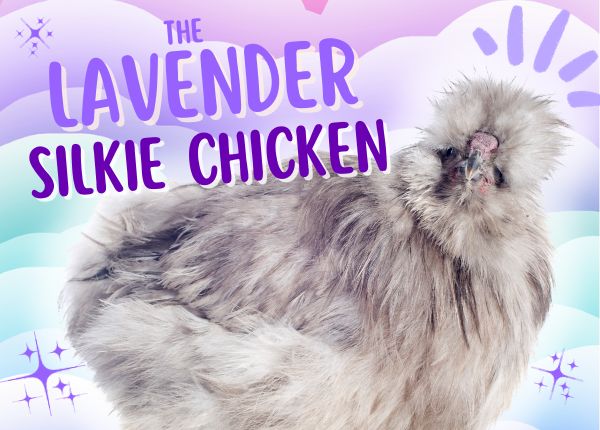
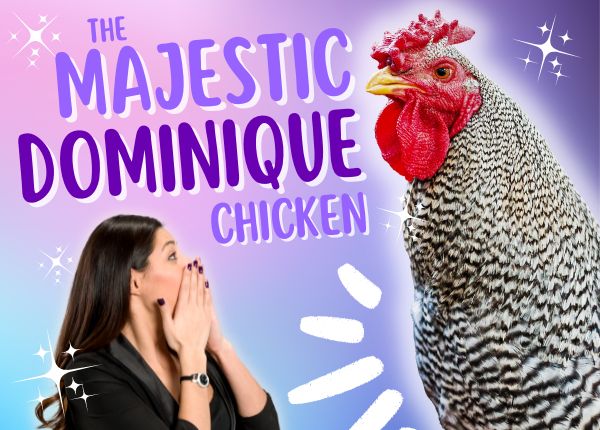







Leave a comment (all fields required)